Company History
2017
In 2017 Verity introduced the SD512NIR, Near-Infrared Spectrometer. This spectrometer is for NIR Applications (optical emission spectroscopy or spectral reflectometry).
Verity also released the SD1024GM and SD2048GH. The SD1024GM offers performance between the SD1024G and the SD1024GL. Also available is a high resolution version of the SD1024GM, the SD2048GM. The SD2048GH offers an industry leading, unique combination of high sensitivity and high resolution.
2016
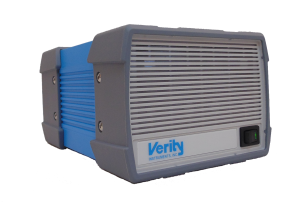 In 2016 Verity introduced the SE1024GL-CMOS, Value Line Spectrometer. This spectrometer provides a cost effective solution for general purpose applications. As compared the SD1024GL, cost is reduced by the use of simpler packaging, LCD removal, reduced connector count and a detector that can be driven using simpler electronics. Despite the cost reduction, the impact on performance is minimized. The primary advantage of the SD1024GL over the SE1024GL- CMOS is the wider dynamic range.
In 2016 Verity introduced the SE1024GL-CMOS, Value Line Spectrometer. This spectrometer provides a cost effective solution for general purpose applications. As compared the SD1024GL, cost is reduced by the use of simpler packaging, LCD removal, reduced connector count and a detector that can be driven using simpler electronics. Despite the cost reduction, the impact on performance is minimized. The primary advantage of the SD1024GL over the SE1024GL- CMOS is the wider dynamic range.
2012
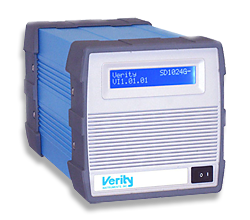 In 2012 Verity introduced the SD102GTM Series and SD1024XTM Series. Unique in our industry, the SD1024X combines the functionality of a high performance spectrometer and an applications computer in the same size enclosure as Verity’s standard spectrometers. Both the SD1024G Series and SD1024X Series are available in ultra performance, high performance, general purpose, and high resolution models.
In 2012 Verity introduced the SD102GTM Series and SD1024XTM Series. Unique in our industry, the SD1024X combines the functionality of a high performance spectrometer and an applications computer in the same size enclosure as Verity’s standard spectrometers. Both the SD1024G Series and SD1024X Series are available in ultra performance, high performance, general purpose, and high resolution models.
2010
In 2010, Verity released the RoHS compliant SD1024FLTM.
2008
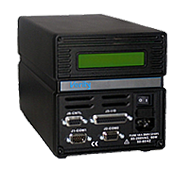
In 2008, Verity released the Ultra Performance SD1024FHTM and in 2010, Verity released the RoHS compliant SD1024FLTM.
2007
In 2007, Verity introduced the RoHS compliant SD1024FTM and SP2006TM Spectral Reflectometer.
2004
In 2004, Verity introduced the SD2048PLTM an embedded smart spectrometer for low CPU requirement applications. This model does not require the addition of an applications computer for algorithm processing.
2001
In 2001, Verity introduced a low cost spectrometer with twice the resolving capability of the SD1024DLTM. This instrument, the SD2048DLTM, is ideal for bright plasma applications.
2000
In 2000, Verity introduced a lower cost spectrometer targeting general purpose applications. The SD1024DLTM featured a 2048-element, one-dimensional-array CCD, while using the same application software and DSP-based smart card as the SD1024DTM.
1999
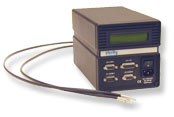 In 1999, Verity also introduced the SD1024TM spectrometer, developed for the demanding requirements of semiconductor process control. Its optical system employs a 1024-element, scientific-grade CCD sensor array specifically designed for multi-channel spectroscopy, offering high performance at a moderate cost. The advantages of the SD1024 include its excellent UV response, stability against deterioration under UV exposure, high sensitivity, wide dynamic range and superior output linearity.
In 1999, Verity also introduced the SD1024TM spectrometer, developed for the demanding requirements of semiconductor process control. Its optical system employs a 1024-element, scientific-grade CCD sensor array specifically designed for multi-channel spectroscopy, offering high performance at a moderate cost. The advantages of the SD1024 include its excellent UV response, stability against deterioration under UV exposure, high sensitivity, wide dynamic range and superior output linearity.
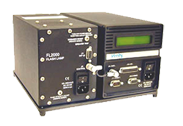 In 1999, Verity also introduced a spectral interferometer/reflectometer. The SP2002TM is used for etch endpoint, CMP endpoint, and CVD film thickness. The SP2002 is designed for real-time measurements, either in-line or in-situ.
In 1999, Verity also introduced a spectral interferometer/reflectometer. The SP2002TM is used for etch endpoint, CMP endpoint, and CVD film thickness. The SP2002 is designed for real-time measurements, either in-line or in-situ.
1998
In 1998, with the introduction of the SD100 Verity began offering a new breed of smart detectors – optical emission monitors that integrate sophisticated embedded processors. New software was developed to provide intelligent instrument control, data acquisition, and endpoint detection without requiring an additional interface computer to perform these functions. The SD100 Smart Scanning Monochromator is a high-performance photomultiplier tube-based spectrometer, which permits spectral scanning of its 185-925nm wavelength range. With an optical resolution better than 1nm, this combination DSP/microprocessor-controlled instrument provided high-performance, fully integrated smart optical monitoring and endpoint control.
1996
In 1996,Verity introduced its breakthrough Neural Net process control algorithm. This proprietary algorithm presents a revolutionary method of recognizing and learning process endpoint patterns with a simplified identify and train feature. With this development, process engineers do not have to become numerical algorithm experts to develop a robust endpoint detection scheme. One simply tags the endpoint pattern on several valid wafer run data files, and the neural network learns the pattern for robust, reliable endpoint detection. This software is now used by semiconductor manufacturers worldwide.
1992
 In 1992, Verity introduced the iDAC1000, an industrial PC-based passive backplane computer complete with a color VGA monitor and full function keypad in a compact rectangular package. In later years, the VM3000 and VM3400 system controllers replaced the iDAC1000. The VM3000 is a DOS-based system and the VM3400 is a Windows NT-based system. The VM series of system controllers runs Verity’s proprietary ScanView application software.
In 1992, Verity introduced the iDAC1000, an industrial PC-based passive backplane computer complete with a color VGA monitor and full function keypad in a compact rectangular package. In later years, the VM3000 and VM3400 system controllers replaced the iDAC1000. The VM3000 is a DOS-based system and the VM3400 is a Windows NT-based system. The VM series of system controllers runs Verity’s proprietary ScanView application software.
1987
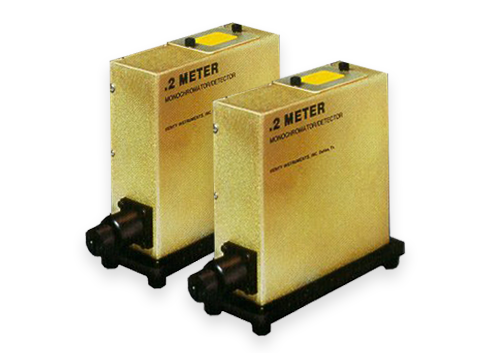
In 1987, Verity introduced its first OEM monochromator for plasma etch endpoint detection. For the first time, the semiconductor industry could obtain a high resolution monochromator complete with electronics and detector in a package small enough to integrate into a single wafer system. To address the vacuum/optical interface, Verity designed a wide variety of fiber optic feed-throughs, fiber optic cables, lens couplers, and devices for shielding optical elements from condensing gases.
1980
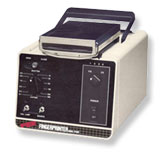
In 1980, Verity’s product emphasis shifted to the semiconductor industry with the introduction of the Fingerprinter, a portable spectrometer for the analysis of plasma emissions. Following the Fingerprinter was the Endpointer, a monochromator and radiometer system for detecting optical endpoints.
1976
In 1976, Verity’s first product line included sensors and controls to measure moisture content in cotton fibers and control the drying of the fibers in the ginning process for the agricultural industry
